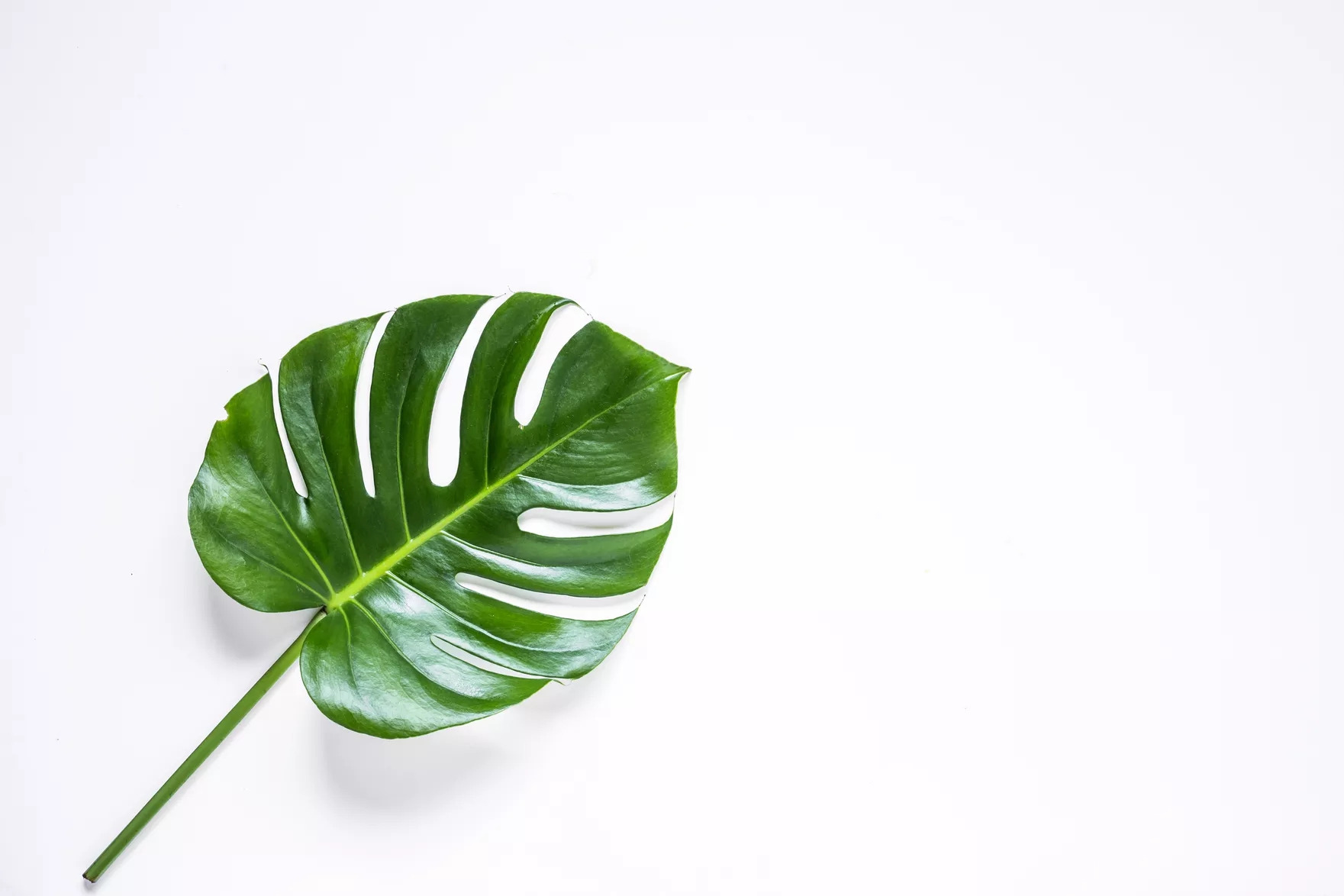为什么树叶的形状如此不同?
There’s one thing about leaves that science has long agreed upon: They only grow so big as available water allows — but not so big that the whole plant overheats.
关于叶子,有一件事是科学界长期以来一致同意的:叶子只能在可利用的水分允许的情况下长得那么大,但又不能大到让整个植物过热。

Every leaf tells a story — not just about the plant, but also its environment. Claudio Divizia/Shutterstock
The water part makes sense. We all need water to grow. And the sun? Leaves collect those rays and, through photosynthesis, convert them into food.
水的部分是有意义的。我们都需要水来成长。那太阳呢?树叶收集这些光线,通过光合作用把它们转化为食物。
Too much direct sunlight and that photosynthetic engine spins hot and risks burning out.
如果阳光直射太多,光合作用引擎就会转得很热,有烧坏的危险。

A plant's leaves are perfectly designed to capture sunlight and carbon dioxide — and thanks to the marvel that is photosynthesis — turning them into food. GiroScience/Shutterstock
So, when it comes to the size of leaves, plants sing a simple refrain: Water grows. Sunshine restrains. And somewhere in the middle, there’s a happy balance of a leaf that grows just the right size under its own unique set of circumstances.
所以,当谈到叶子的大小时,植物有着一个简单的重复:水生长。阳光抑制。而在中间的某个地方,一片叶子有着良好的平衡,在它自己独特的环境下,它能长到合适的大小。
But recently, after studying some 7,000 plants from around the world, Australian scientists found a new variable in nature’s math.
但是最近,在研究了世界各地的7000种植物后,澳大利亚科学家在自然数学中发现了一个新的变量。
It’s not just the risk of overheating that keeps leaves in check, but also the cold that comes creeping at night.
这不仅是过热的风险,还有寒冷来袭的夜晚。
"You put these two ingredients together — the risk of freezing and the risk of overheating — and this helps understand the pattern of leaf sizes you see across the entire world,” Ian Wright of Sydney’s Macquarie University, told the BBC.
“你把这两种成分放在一起——结冰的风险和过热的风险——这有助于理解你在全世界看到的叶子大小的模式,”悉尼麦考瑞大学的伊恩·赖特告诉BBC。
In fact, plants may be much more wary of catching a chill than too many rays.
事实上,比起过多的光线,植物可能更担心受到寒冷的侵袭。
But don't all leaves do the same thing?
但所有的树叶不都是一样的吗?

Leaves from a common fig tree (left) couldn't look more different from those of a fern. Pavel Vakhrushev/COLOA Studio/Shutterstock
What science seems far less sure about is why leaves look the way they do.
科学似乎远不能确定的是树叶为什么是这样的。
Why is a fig tree’s foliage so wildly different-looking than that of, say, a fern?
为什么无花果树的叶子和蕨类植物的叶子看起来如此不同?
Surely, nature didn’t design this swirling kaleidoscope of colors and patterns just to keep humans in a state of awe and wonder?
当然,大自然设计出这五彩缤纷的万花筒,不是为了让人类保持敬畏和惊奇吗?
In other words, a species develops a kind of leaf — whether that’s the simple, openness of a banana leaf or the moisture-retaining spindle that is the hardy pine needle.
换句话说,一个物种进化出了一种叶子——不管是简单的、开放的芭蕉叶,还是保持水分的梭形——耐寒的松针。

The pine needle is also a kind of leaf — one specially designed to retain moisture and rebuff extreme cold. Oleksandr Kostiuchenko/Shutterstock
Right plant, right place (and right leaf)
正确的植物,正确的地方(和正确的叶子)
The angles in leaves, for example, may play a role in how sunlight is intercepted. Sharp angles, the study notes, may reduce the amount of light that the leaf intercepts during the blaring midday sun. In effect, a sharp-angled leaf can shade itself.
例如,树叶的角度可能在阳光被拦截的过程中起作用。研究指出,尖锐的角度可能会减少叶子在正午耀眼的阳光下截取的光线。实际上,尖角的叶子可以遮荫。
Conversely, rounder leaves have “greater daily light interception and potentially greater carbon gain."
相反,圆叶有“更大的日常光截获和潜在更大的碳获取。”

The tropical pine leaf is angled in such a way that it can shade itself from too much sun. Eduardo Lopez/Shutterstock
Of course, there are a few basic rules that keep plants from coloring too far out of nature’s lines.
当然,有一些基本的规则可以防止植物的颜色偏离自然的线条太远。
A leaf’s design must be open enough to capture sunlight for all-important photosynthesis. It also needs to make sure a leaf is shaped in a way that ensures the pores — called stomatae — can soak up enough carbon dioxide, which helps fuel that process.
叶子的设计必须足够开放,以捕获阳光,进行至关重要的光合作用。它还需要确保叶子的形状能够确保气孔能够吸收足够的二氧化碳,从而为这个过程提供燃料。

Leaves have pores that help them breathe in carbon dioxide, a key requirement for photosynthesis. phanthit.malisuwan/Shutterstock
And that’s where size plays a key role. Like solar panels, big leaves harvest as much sunlight as they can. Smaller leaves shun too much sun and focus on keeping bundled tight in the cold.
这就是规模发挥关键作用的地方。就像太阳能电池板一样,大树叶可以收集尽可能多的阳光。小叶子会避开过多的阳光,在寒冷的天气里会把叶子裹得严严实实。
Every species designs its foliage differently to be perfectly suited to its environment. Anything less than that spells the end of the plant.
每一种植物都以不同的方式设计树叶,以完全适应其所处的环境。低于这个标准就意味着工厂的终结。
Ultimately, something as crucial to a plant’s survival can’t afford to be anything less than perfect. Beauty just happens to be a side-product of that functional perfection.
最终,对植物生存至关重要的东西是不完美的。美丽只是完美功能的副产品。







